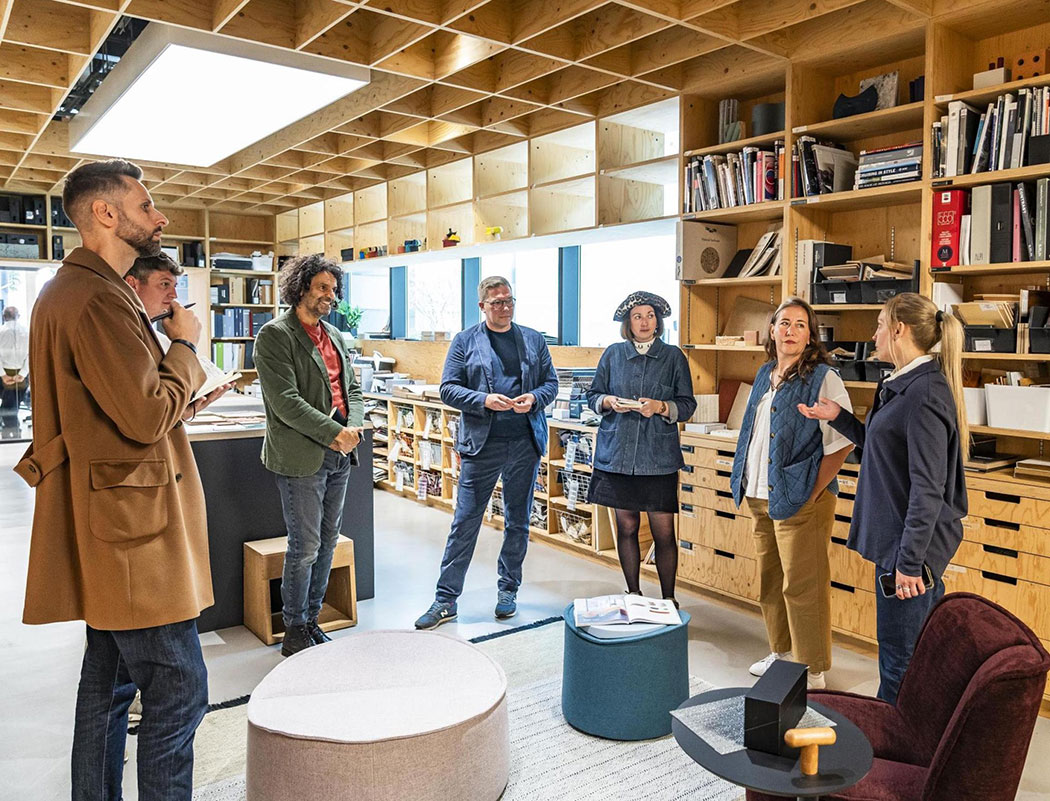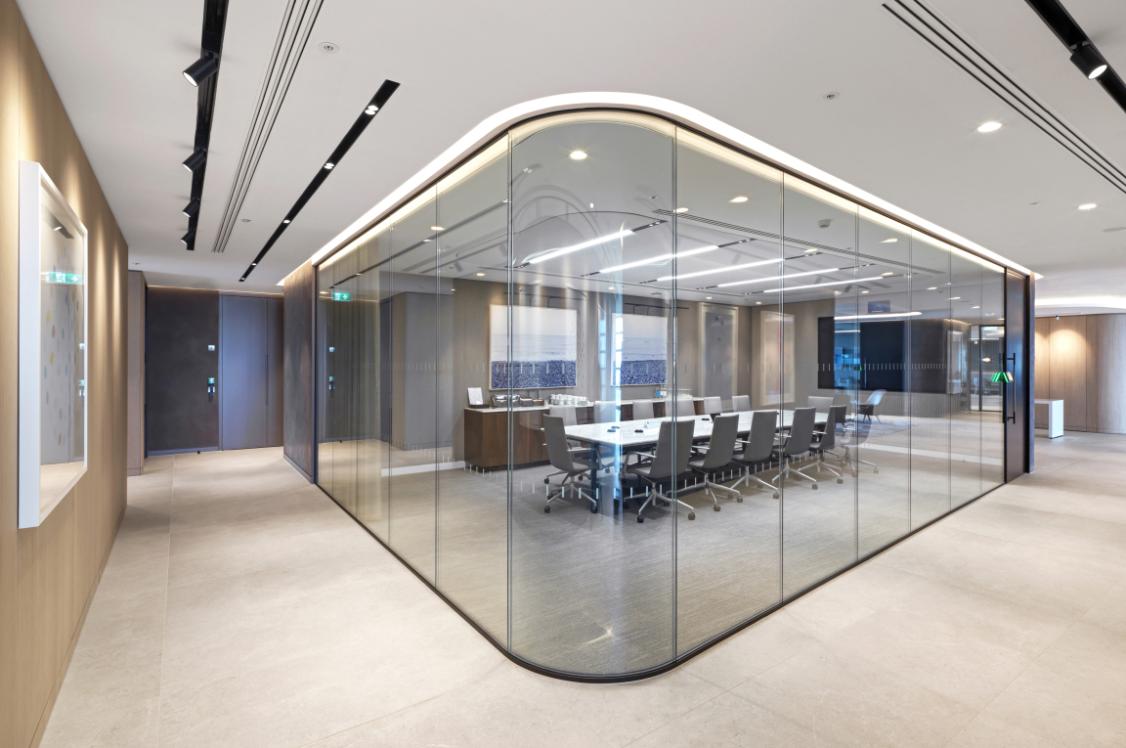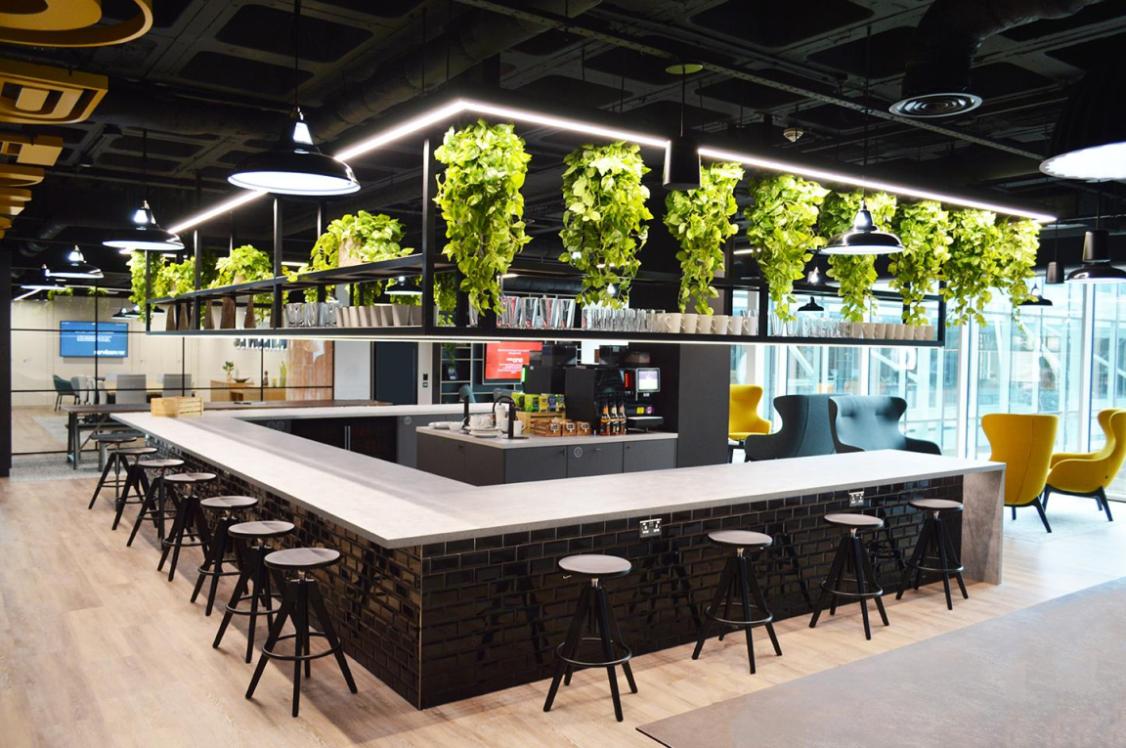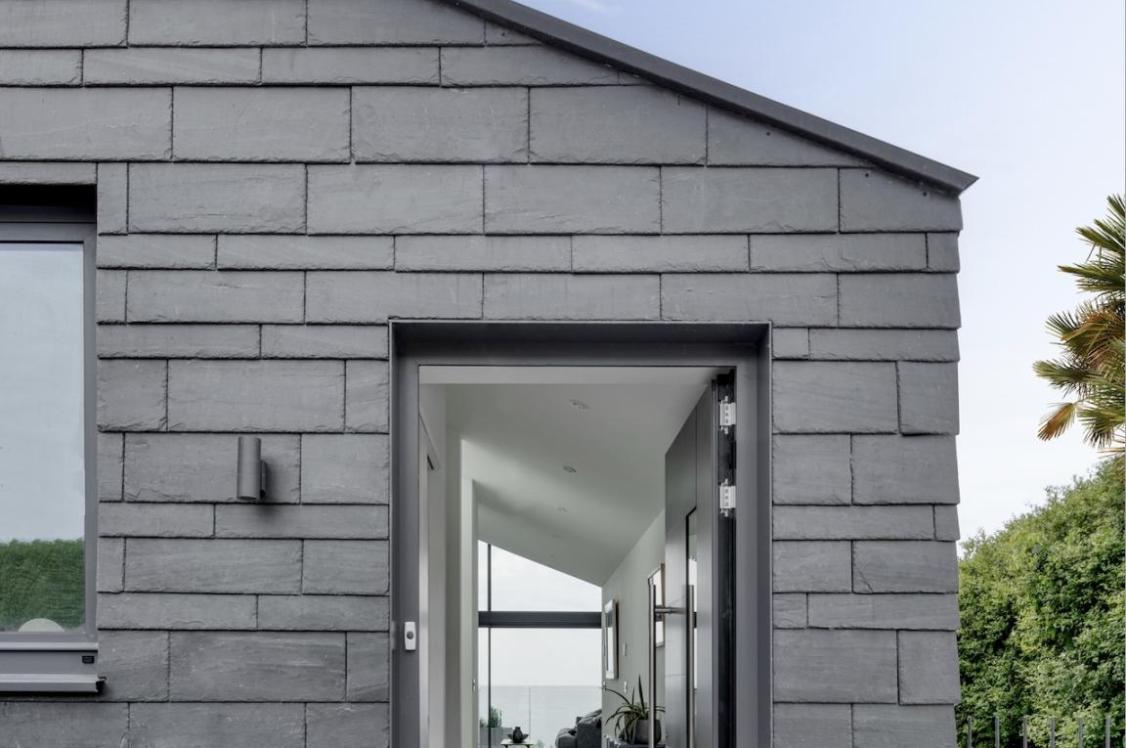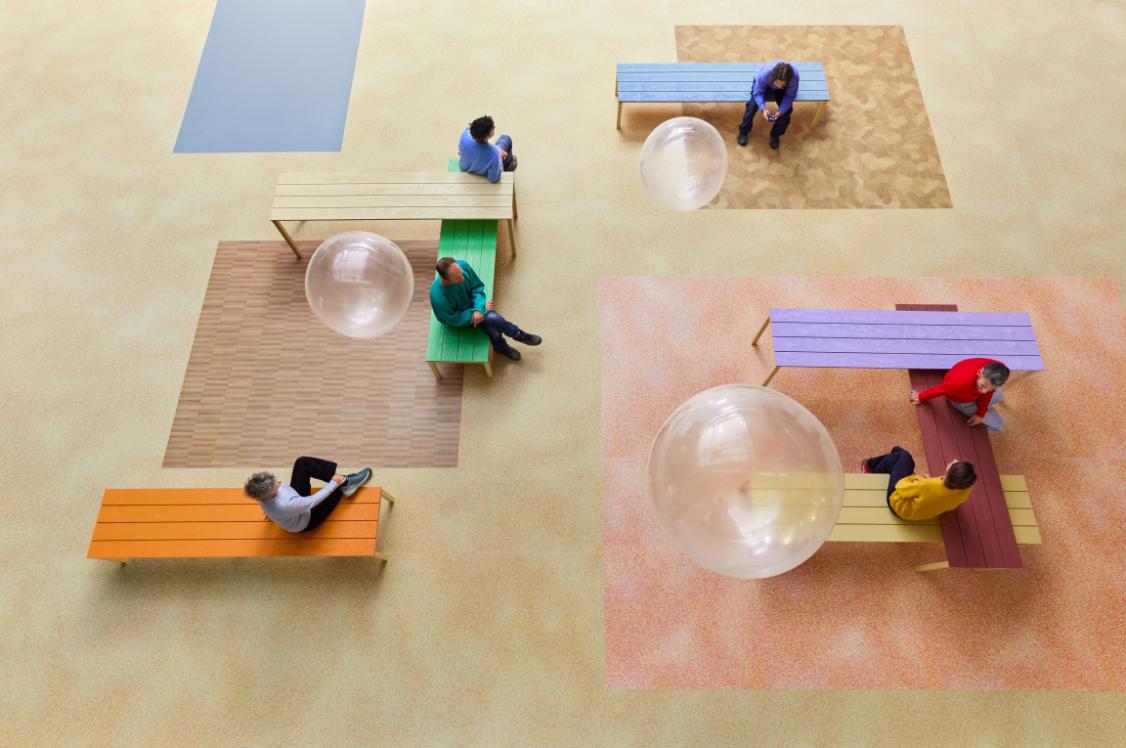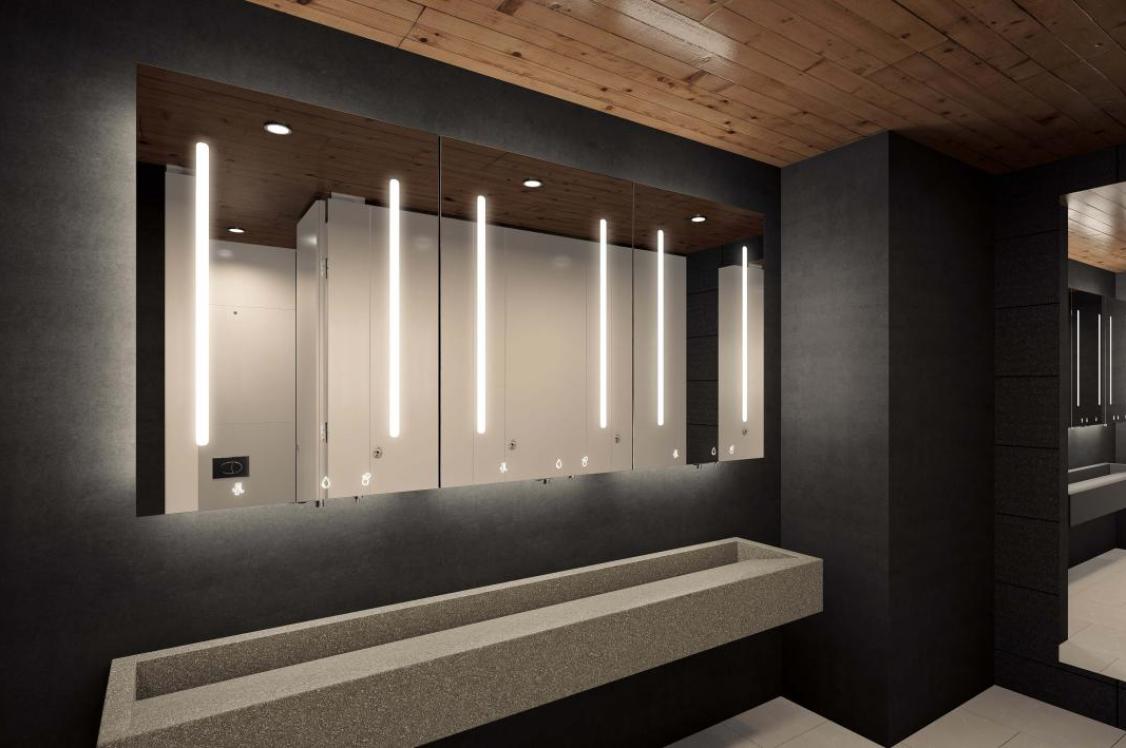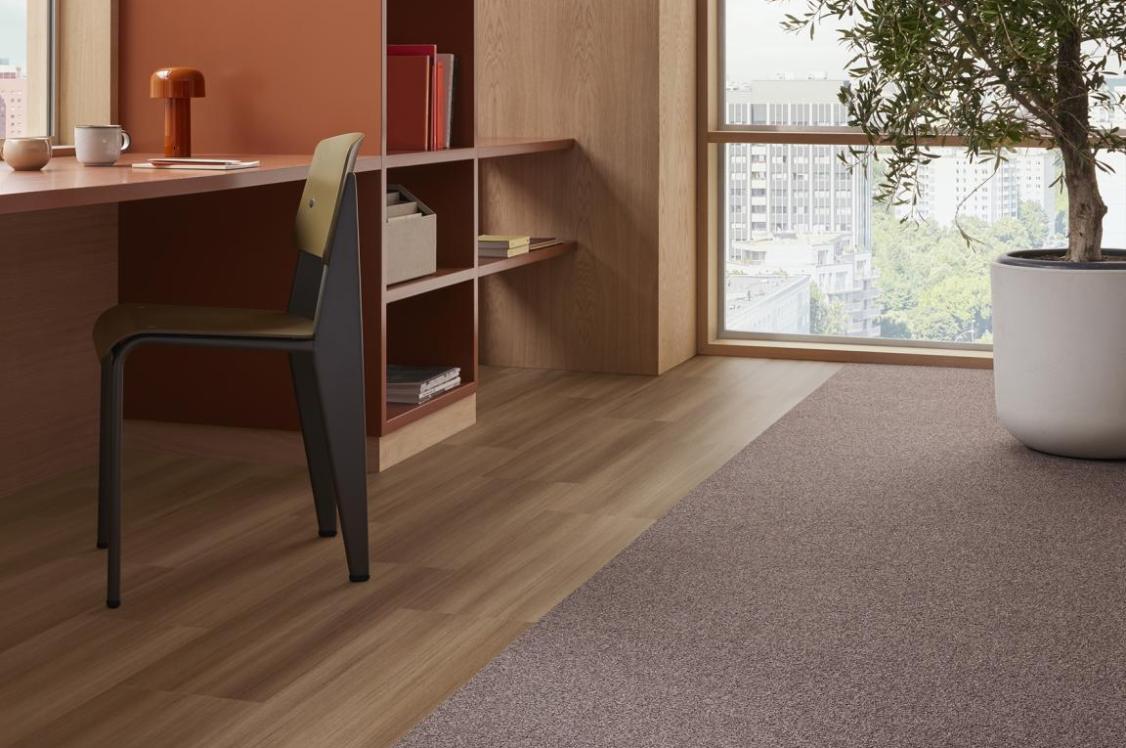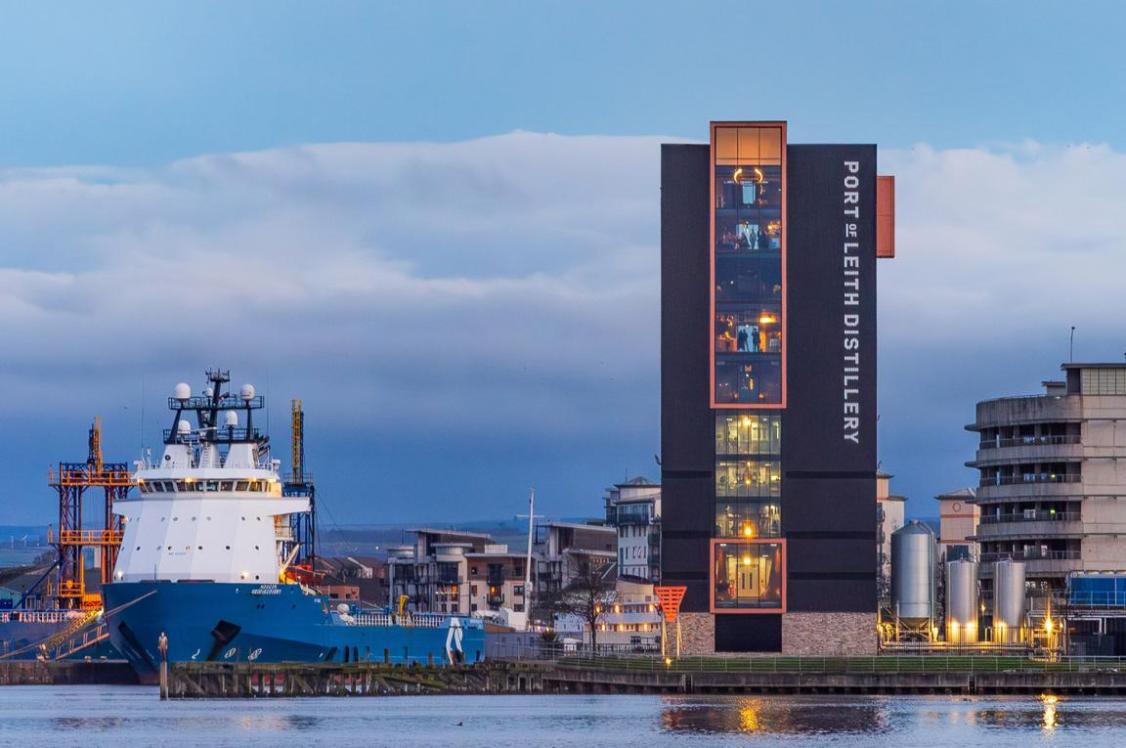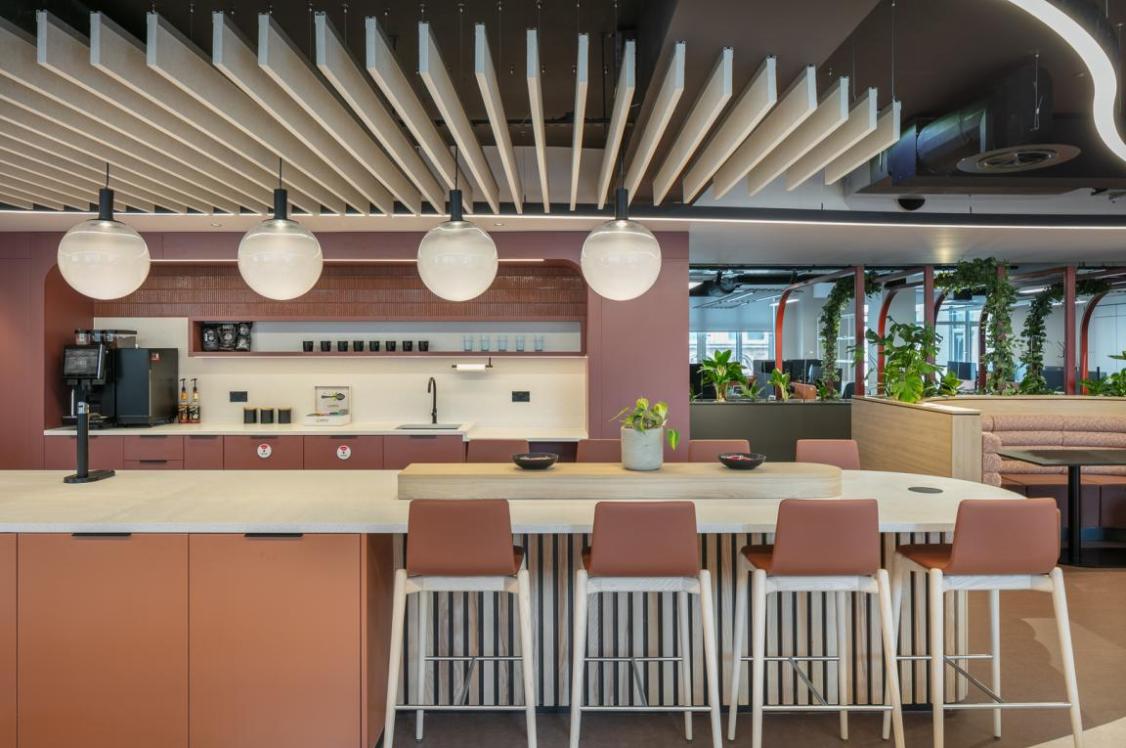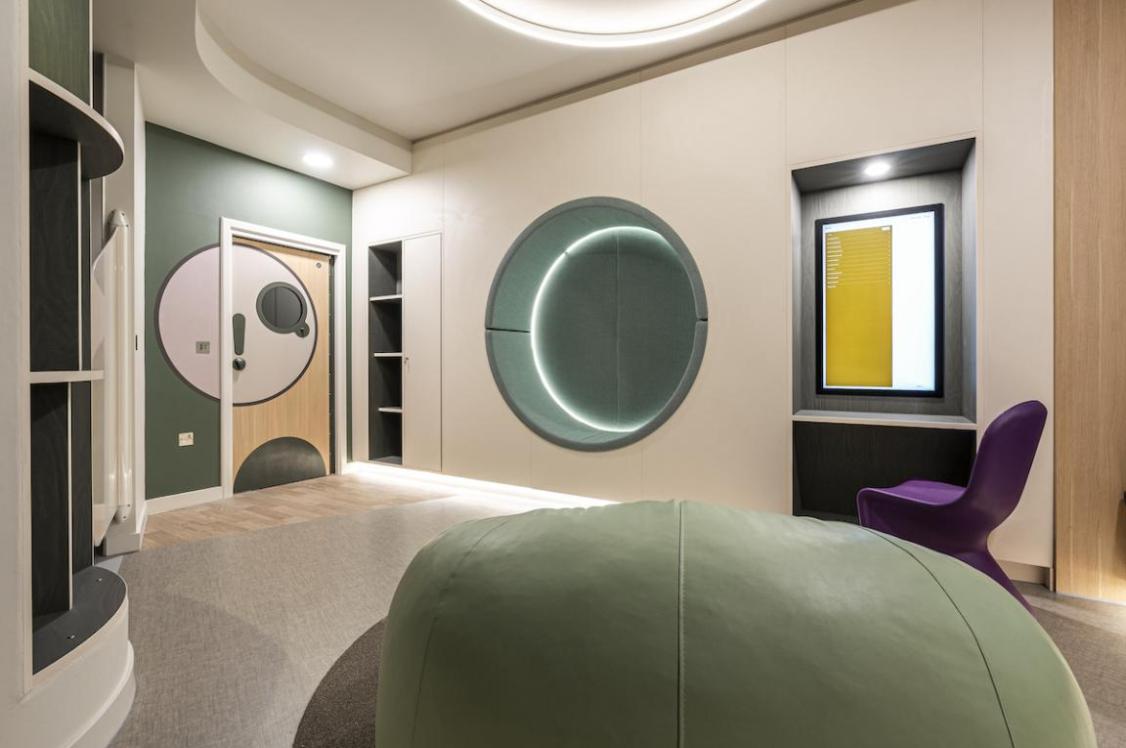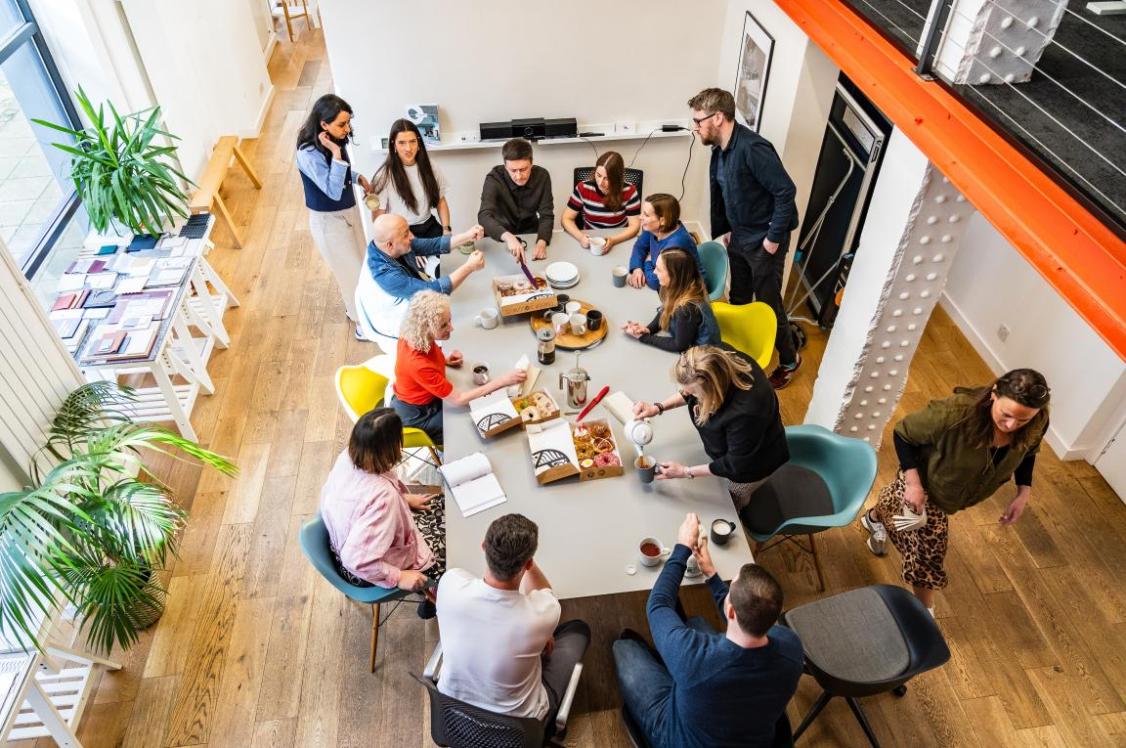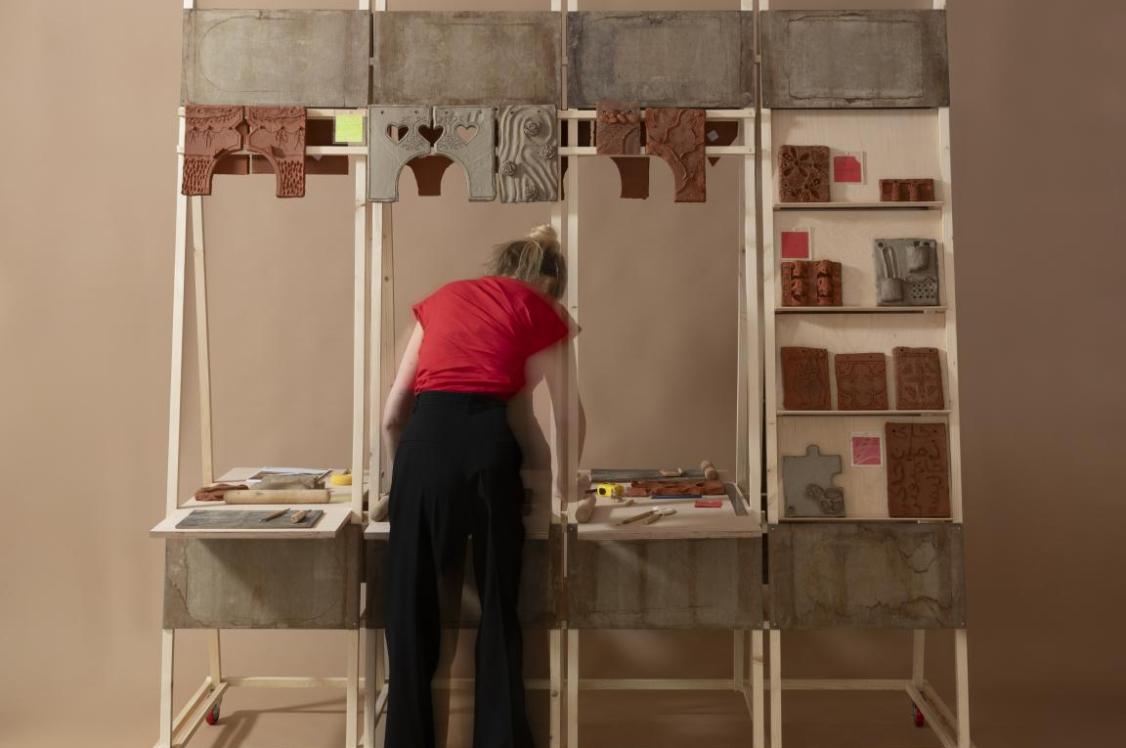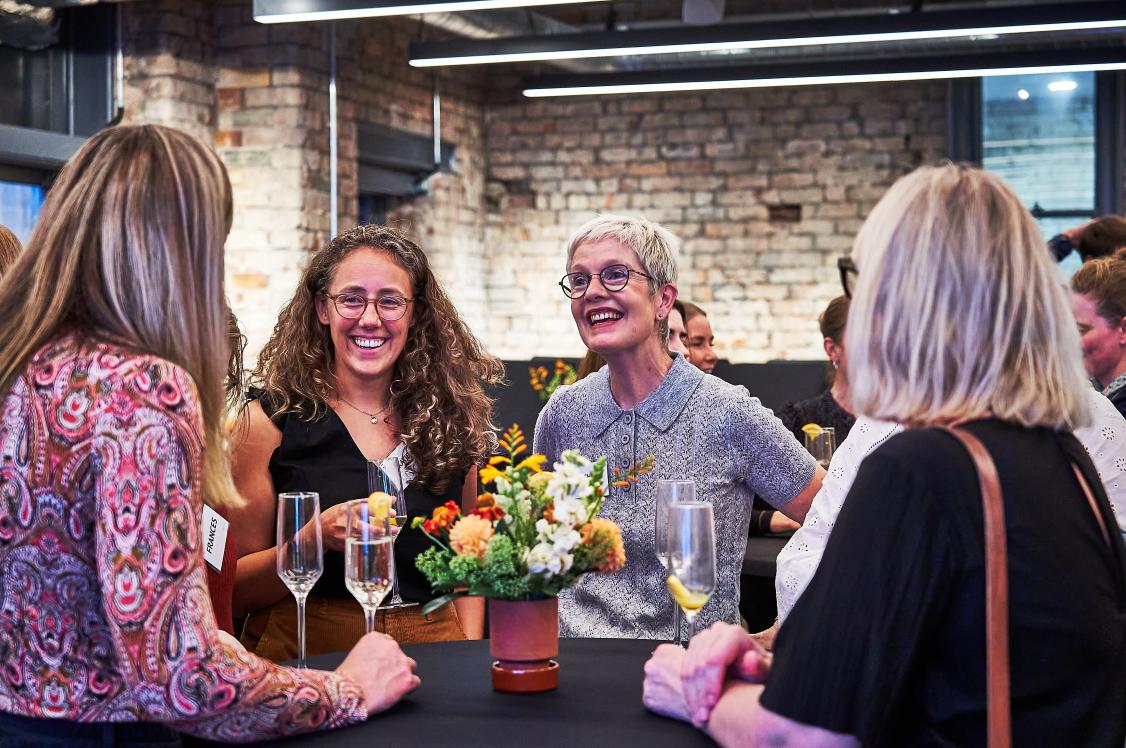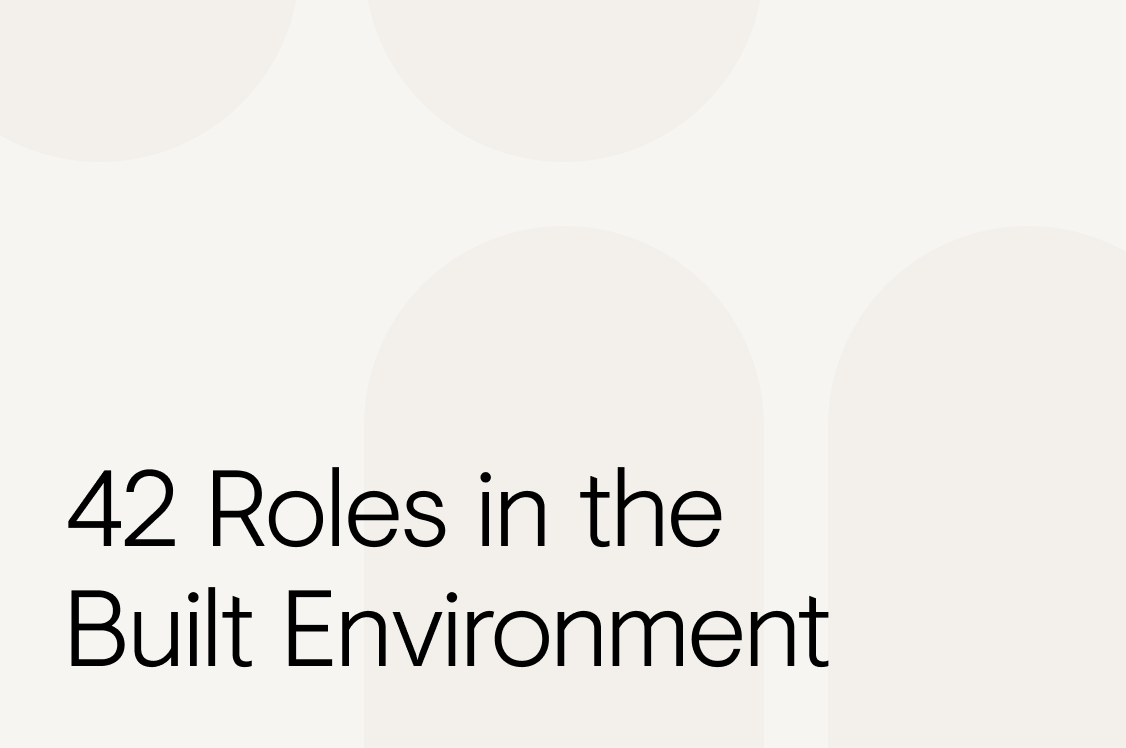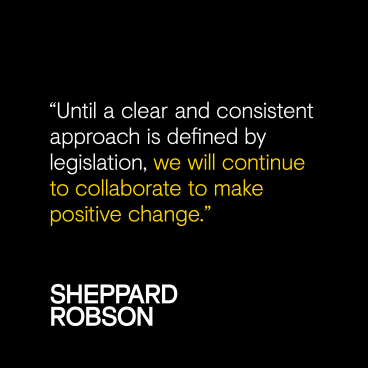Carbon-12: Chapman Taylor.
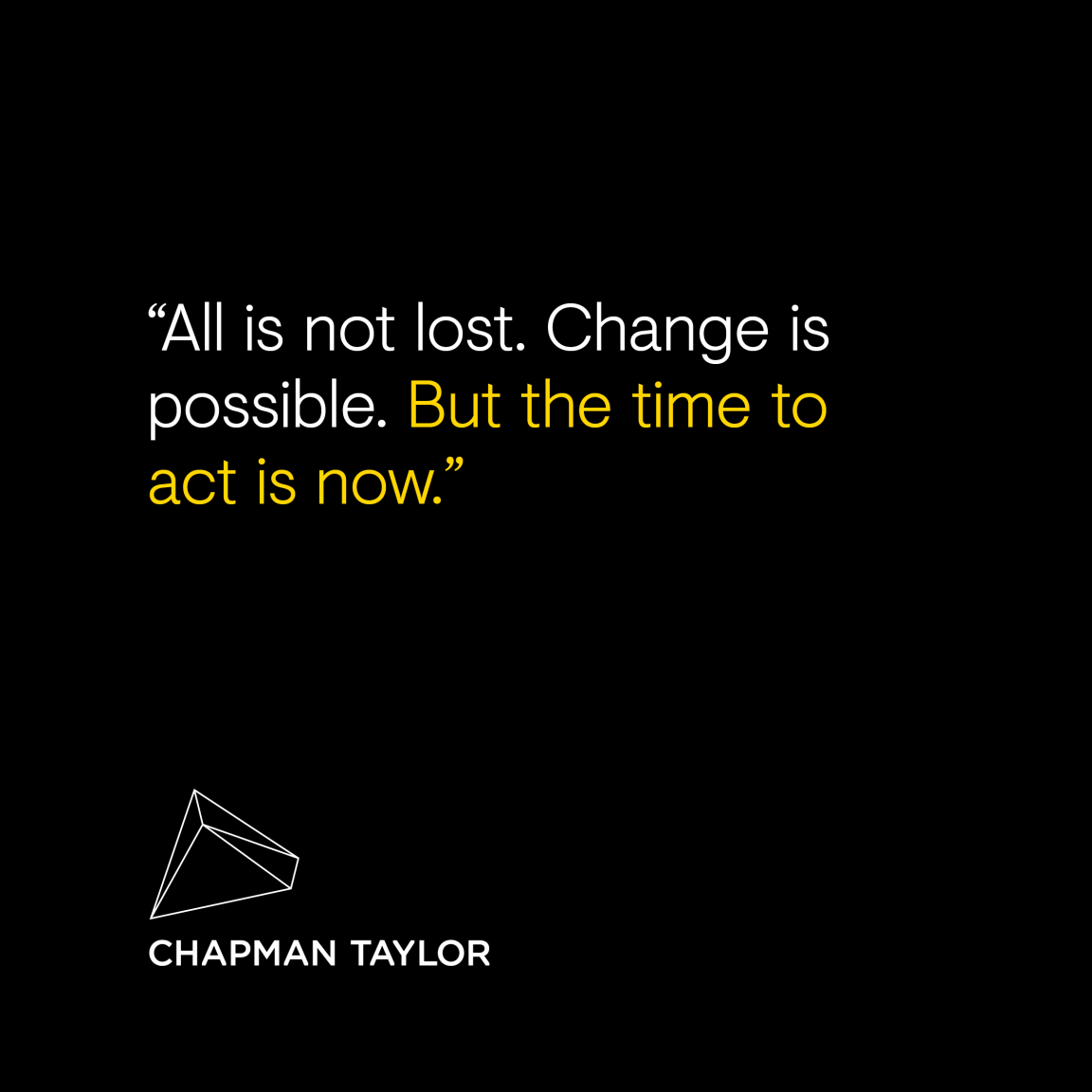
Chapman Taylor is a global practice of award-winning architects, masterplanners, and interior designers, with experience in every major industry sector.
With offices located around the globe, the firm has a fantastically broad world view, which head of sustainability, Alex Esfahani tells us, makes Chapman Taylor's approach to sustainability a collaborative one. Knowledge sharing plays a key role in enabling the team as a whole to make positive strides forward.
This dedication to collaboration and conversation underpins all that Alex does. When we started out with our research for Carbon-12, Alex dedicated his time to sharing an educational presentation he'd crafted on the very topic of carbon with our team.
It conveyed the approach of Chapman Taylor beautifully, stressing the importance of taking a more macro view rather than focus only on one area of carbon reduction. And this in turn informed our own approach to this exhibition and editorial series.
Here, we catch up with Alex on his role as head of sustainability at Chapman Taylor, and how that's shaping the practice's work now and into the future, with a glance back to the past.
What's your role in terms of sustainability?
"As head of sustainability at Chapman Taylor, I have the privilege of working collaboratively across our global studios, sharing knowledge and advancing sustainable practices. Sustainability is not just a technical challenge but a responsibility shaped by cultural and environmental contexts unique to each region. By treating it as a collective effort, we can pool resources, exchange insights, and accelerate the adoption of innovative techniques, ensuring a cohesive yet adaptable approach to sustainability at a global scale.
"With the built environment responsible for nearly 40% of global carbon emissions, our role in tackling climate change is critical. Addressing this challenge requires a deep commitment to research and development, exploring new materials, construction methods, and operational efficiencies to enhance long-term sustainability.
"Establishing a central sustainability contact across our 15 studios has strengthened knowledge-sharing and ensured that sustainability principles are embedded across all aspects of our work. The Responsible Design team helps integrate sustainability into every stage of the design process, ensuring it remains a priority rather than an afterthought.
"A key part of my work is championing sustainable design philosophies, questioning traditional approaches while balancing commercial viability. Engaging with the wider industry, representing Chapman Taylor at external events and industry bodies, and contributing to sustainable design discussions all help push the agenda forward.
"One of the most rewarding initiatives has been the Responsible Design Collective, a platform giving younger architects a space to develop ideas and take ownership of sustainability within the practice. Encouraging engagement at all levels is essential to strengthening long-term commitment and keeping sustainability at the heart of our work.
"Chapman Taylor’s diverse portfolio, spanning large urban developments to highly specialised projects, demands sector-specific sustainability strategies. In addition to leading sustainability efforts, I oversee a group focused on sector specialism, ensuring that each industry benefits from tailored, high-impact solutions. Beyond projects, our commitment to ESG principles extends to how we operate as a business, embedding social value, equity, diversity, and inclusion into our studio culture and ensuring our work reflects a broader commitment to environmental and social responsibility.
"Ultimately, my focus is on creating momentum around sustainability, both within the company and across the wider industry. It is about driving change, mentoring future generations, and constantly challenging industry norms. The challenge is not only improving individual buildings but also reimagining how we shape cities. Concepts such as the 15-minute city, community-focused design, and adaptive reuse will be critical in reducing emissions and ensuring the built environment is prepared for the future."
What is Chapman Taylor's stance on lowering carbon?
"If we isolate the UK as an impact driver of carbon emissions, it contributes approximately 1% of global emissions. While this may seem small in a global context, it is equivalent to the combined emissions of two average-sized countries. Notably, 50% of the UK’s emissions come from the construction industry, underscoring the sector’s significant role in addressing climate change.
"At Chapman Taylor, we take a whole life carbon approach, assessing both operational carbon and embodied carbon across the entire lifecycle of our projects. The greatest opportunity to reduce embodied carbon emissions arises during the feasibility and concept design stages, where early decisions can have the most significant impact. The most effective strategy is to prioritise the reuse of existing built assets, reducing the need for new construction. Where new buildings are required, optimising material use from the outset is essential.
"Material selection plays a crucial role in reducing carbon impact. The use of low embodied carbon materials, such as timber or timber-hybrid construction systems and bio-based materials, is a key consideration. When these options are not technically feasible or economically viable, material efficiency and optimisation become the main focus.
"This includes specifying low-carbon cement substitutes, low-carbon steel, and carefully considering column spacing and beam/slab spans to minimise structural carbon emissions. Additionally, reducing basement depth and overall building mass can significantly cut the carbon footprint associated with foundation and subgrade structures.
"Beyond material choices, supply chain considerations are essential. The manufacturing process, transportation emissions, and proximity of production facilities to the development site must all be factored into carbon assessments. Prefabrication and modular construction can further enhance material efficiency, improve quality control, and reduce construction waste.
"Chapman Taylor employs a suite of sustainability software to evaluate both embodied and operational carbon. This technology allows us to test and verify carbon values early in the design process, ensuring that sustainable principles are embedded from the outset. By providing visual feedback on sustainable design options, we empower clients to make informed decisions that enhance both environmental performance and economic value. Simple design considerations, such as adjusting room heights or alternative spatial configurations, can maximise thermal comfort while offering economic advantages without compromising the architectural vision.
"To ensure we are using best-in-class Environmental Product Declarations (EPDs), our carbon assessment tools track materials and their lifecycle impacts, aligning with industry standards. Early-stage Whole Life Carbon Assessments (WLCA) covering stages A1-A5 allow us to collaborate with contractors from the tender stage, ensuring alignment with carbon reduction milestones set at project inception. By incorporating shipping and manufacturing impact assessments, we establish a foundation for achieving carbon reduction goals throughout the construction process.
"In addition to reducing the carbon footprint of our projects, Chapman Taylor is also focusing on the impact of its own business activities. Since 2019, we are measuring our scope 1, 2, and 3 emissions under the GHG Protocol and identifying measures to help reduce CO₂ emissions across all areas of our operations.
"In terms of our business operations, we are particularly focused on reducing our scope 3 emissions, in particular by re-evaluating our international travel requirements and partnering with like-minded suppliers to help reduce indirect emissions from purchased goods and services and upstream leased assets.
"At Chapman Taylor, we recognise that sustainability is not just about reducing emissions—it is about creating long-term resilience in the built environment."
"By taking a proactive, science-led approach, we are ensuring that our projects and business operations align with global sustainability goals, future-proofing both our assets and our environmental impact."
Can you tell us about some of the low carbon projects you've worked on/are working on?
"When designing for the built environment we aren’t just designing the building, we need to consider the building as a microcosm of the city. Understanding the context within the masterplan, the microclimate, the form factor of the building and all the way to the material selection, technical systems and final details.
"A “fabric-first” approach is fine, but it ignores some much bigger drivers, and achieving overall sustainability demands a much wider view. For example, the location, the cultural context, the local vernacular, differing microclimatic conditions, and different functions, all require different design strategies. It is the sum of all these individual considerations that creates a truly holistic and sustainable solution.
"We know that decisions made at the masterplan level have a direct effect on the carbon agenda. 80 – 90% of embodied carbon within new urban development is related to the grey infrastructure with just 10-20% being the related to individual buildings. It is therefore critical how we sculpt and place-make our cities. Car-free environments, the implementation of 15-minute walkable cities, and circular economy principles can enable carbon reduction at a really large scale, or rather we can achieve carbon savings, when compared with business-as-usual urban planning principles.
"At Chapman Taylor we use software, such as Autodesk Forma, to test early stage design options of our masterplans, gaining insights into the effects of building orientation and massing on microclimate, direct solar radiation and even initial (stage A1- A3) embodied carbon comparisons.
"Overseeing the wide range of work undertaken by our international studios, I have the opportunity to gain some incredible insights and to learn about exciting innovations in sustainable design, from across the world. This cross-studio collaboration allows us to share expertise, develop specialisms, and apply research across different regions and scales.
"Much of our focus has been on optimising energy efficiency and reducing the Energy Usage Intensity (EUI) of our schemes. A notable example is The Flow Building in Prague, where energy consumption has been carefully managed through the use of air-source heat pumps, a VRV-based HVAC system, parametrically controlled solar shading systems and passive design strategies to optimise overall performance. Meanwhile, our Düsseldorf studio is developing innovative mass timber construction for logistics buildings, demonstrating the environmental and structural benefits of working with timber as a low-carbon, renewable material.
"At a larger scale, our Bangkok and Dubai studios are collaborating on the development of Smart City concepts, embedding sustainability and digital technology into masterplan-level designs. These projects focus on efficient resource management, data-driven urban planning, and integrated infrastructure that responds dynamically to environmental and social needs.
"In addition to new buildings, we are highly committed to retrofitting and adaptive reuse, recognising that retaining existing structures and materials is one of the most effective ways to reduce carbon emissions. Our interiors team is equally engaged in sustainable material sourcing, focusing on upcycled and repurposed elements.
"A recent project, The Orange Building, exemplifies this approach, where internal partitions and raised access flooring panels were reused, minimising waste while maintaining high-quality design standards. There are no limits to the scale at which carbon reduction strategies can be applied, from entire buildings down to the smallest details of interior fit-outs.
"Beyond project implementation, we are continuously advancing key research areas, positioning ourselves as thought leaders in Modern Methods of Construction (MMC). The advantages of offsite and modular construction in carbon management are often overlooked, yet they provide significant environmental and operational benefits. Studies show that modular construction reduces landfill waste by at least 70%, driven by efficient material usage, improved quality control, and enhanced recycling processes. Additionally, factory-controlled environments lead to shorter on-site construction programmes, reducing embodied carbon impacts, while minimising on-site vehicle use, construction-related congestion, and overall project footprints.
"What is most exciting about this approach is the ability to share these research findings and specialisms between studios, ensuring that knowledge flows seamlessly across our global network. By leveraging expertise from different regions, we can accelerate innovation, enhance sustainability performance, and drive meaningful change in the built environment."
Is there a desire from clients to be 'more sustainable' - or is the drive internal?
"There is a noticeable shift happening within the industry. Economic viability has always been a key driver, and global economic fluctuations continue to present challenges.
"However, it is essential to recognise that true sustainable design also offers long-term economic benefits."
Clients are becoming increasingly aware of this, with recent research from Homeviews revealing that 66.1% of resident at BTR developments now consider ESG and sustainability as primary factors in their decision-making process.
"This raises an important question: where does the cost of sustainability sit within a capitalist society? Consumerism, short-term gains, and the externalization of costs have long been defining traits of capitalism. A quote from Yuval Noah Harari captures this dynamic well: “a conqueror possessed of extreme tolerance and adaptability, thereby turning people into ardent disciples. This conqueror is money.”
"However, sustainability and capitalism are not necessarily at odds. A shift is occurring where the two can be aligned, creating a direct link between market-driven growth and environmental responsibility. Regulation and policy are shaping this evolution, particularly through the rise of green capitalism, where market expansion aligns with environmental principles.
"Frameworks such as the EU and UK Taxonomy and Sustainable Finance Disclosure Regulation (SFDR) are setting new benchmarks for sustainable investment. Similarly, Corporate Social Responsibility (CSR) and ESG principles are becoming embedded within business strategies, ensuring that companies remain accountable for their environmental and social impact.
"As the economic model shifts, lenders and institutional investors are increasingly aligning with EU and UK taxonomy methodologies. This approach helps to future-proof assets and mitigate the risk of stranded investments. The EU Taxonomy, in particular, establishes six overarching environmental principles that businesses must adhere to, ensuring a tangible commitment to sustainability. For architects, engineers, as well as developers, this means demonstrating to end clients that projects not only meet regulatory requirements but also align with long-term sustainability goals.
"Sustainability is no longer just a moral or environmental imperative; it is an economic one."
"The evolving financial landscape demands that businesses integrate sustainable strategies, not just to comply with regulations but to remain competitive in a changing market.
"“Money is anything that people are willing to use in order to represent systematically the value of other things for the purpose of exchanging goods or services”. Yuval Noah Harari
"Goods and services will increasingly be tied to developments that are future-proof, climate-resilient, and adaptable to change, while also meeting the environmental objectives set out by regulatory frameworks. A more operationally efficient scheme not only reduces overhead costs associated with energy consumption, but also drives consumer demand, reinforcing the value of sustainable development.
"This creates a self-reinforcing cycle. ESG policies aimed at reducing a business’s carbon footprint naturally lead to a preference for buildings that meet high-performance environmental standards. In turn, this creates an opportunity where sustainable development becomes the norm, helping to mitigate the risk of stranded assets. As sustainability becomes embedded within economic decision-making, it inherently enhances the value of goods and services, ensuring long-term viability in an evolving market."
How will the UK Net Zero Carbon Buildings Standard aid/challenge you?
"The UK Net Zero Carbon Buildings Standard will provide a clearer framework for all stakeholders, ensuring that sustainability targets are aligned, measurable, and achievable across the industry. For architects, it will establish consistent benchmarks for operational and embodied carbon, helping to drive more sustainable design decisions from the outset. For clients, adopting the Standard will be essential for futureproofing developments, ensuring that assets remain compliant, resilient, and financially viable in a rapidly evolving regulatory landscape.
"However, challenges remain, particularly in material reduction and optimisation. Current industry practices and supply chains are not yet fully equipped to meet the most ambitious targets, requiring innovative material strategies, circular economy principles, and greater efficiencies in structural design to achieve more stringent carbon thresholds. Additionally, achieving Net Zero operational energy will demand improved performance modelling, smarter building management systems, and closer post-occupancy monitoring to bridge the performance gap between design intent and real-world energy use.
"One critical challenge is that, given the Standard is not legislative, it may result in inconsistent adoption across the industry. Without clear regulatory enforcement, some developers may hesitate to commit, and uptake could vary depending on market forces, client priorities, and financial incentives. The lack of strong policy backing and mandatory compliance mechanisms may slow the transition toward universal Net Zero standards, leaving a fragmented approach to carbon reduction across the sector.
"Further obstacles include a skills gap within the industry, as the shift towards net zero carbon design requires greater expertise and upskilling among designers, contractors, and suppliers. There are also supply chain limitations, as low-carbon materials and decarbonised construction processes are not yet widely available or economically competitive at scale. The perceived higher upfront costs of Net Zero buildings could also act as a barrier, despite the long-term financial benefits they offer in terms of operational savings and asset value retention."
What's your hope for the future?
"Before we look ahead, we should also reflect on the past. When we examine historic cities like Yazd, in Iran, we see an elegant, passive approach to environmental design. There is a certain romanticism in a city that has withstood the test of time for 5,000 years and a sophisticated response to the materials and climate of its context.
"In contrast, our modern reliance on industrial-age materials and the pursuit of architectural "isms" have led us to a point where buildings must now be labelled as Net Zero Carbon. Yet Yazd never sought to be Net Zero; it simply existed as a place in which to live and work. Sustainability was an inherent part of its design, not an imposed goal.
"If we align our targets correctly, we will reach a point where buildings are no longer defined by sustainability labels, but by their true purpose: spaces for living, working, entertaining and learning."
"The evolution of materials and construction techniques has shortened building lifespans, yet it has also improved modern living standards. However, the issue of sustainability is not new. The German term Nachhaltigkeit, meaning "lastingness," emerged in the 17th Century in response to deforestation for the shipping industry. Sustainability, in one form or another, has been a fundamental concern for humanity since its earliest days.
"Even the Neanderthals, who lived tens of thousands of years ago, practiced resource management, circular tool use, and adaptive social structures. These principles form the foundation of sustainability, embedded in our genetic heritage. Yet their eventual extinction, likely due to climate change, competition, and resource depletion, serves as a stark warning. Their demise highlights the very real consequences of environmental mismanagement. If we fail to act, modern society may face a similar fate.
"A shift in mindset is imperative. We must move beyond the culture of obsolescence and replacement toward refurbishment and reuse. The norm must change: build less, refurbish more, prioritise efficiency, embrace efficient structural grids, eliminate over-dimensioning, and create future-proof, adaptable spaces.
"With 80% of today’s buildings expected to remain in use by 2050, adaptability and resilience will define the success of our built environment. Future site assessments will no longer view buildings as disposable structures but as carbon banks, repositories of valuable materials. The emergence of material passports, a system for tracking and reusing construction materials, will drive the circular economy, ensuring materials are recirculated rather than discarded.
"Our carbon deficit continues to grow, temperatures are shifting, and time is against us. Yet in the past 20 years, we have seen extraordinary technological advancements. Artificial Intelligence has opened new doors, allowing us to assess sustainability principles with greater speed and precision. It may well be the key to accelerating the transformation we so urgently need. All is not lost. Change is possible. But the time to act is now."
Chapman Taylor's views are shared as part of the Carbon-12 exhibition at Material Source Studio Manchester & Glasgow. Visit us, no booking required.







